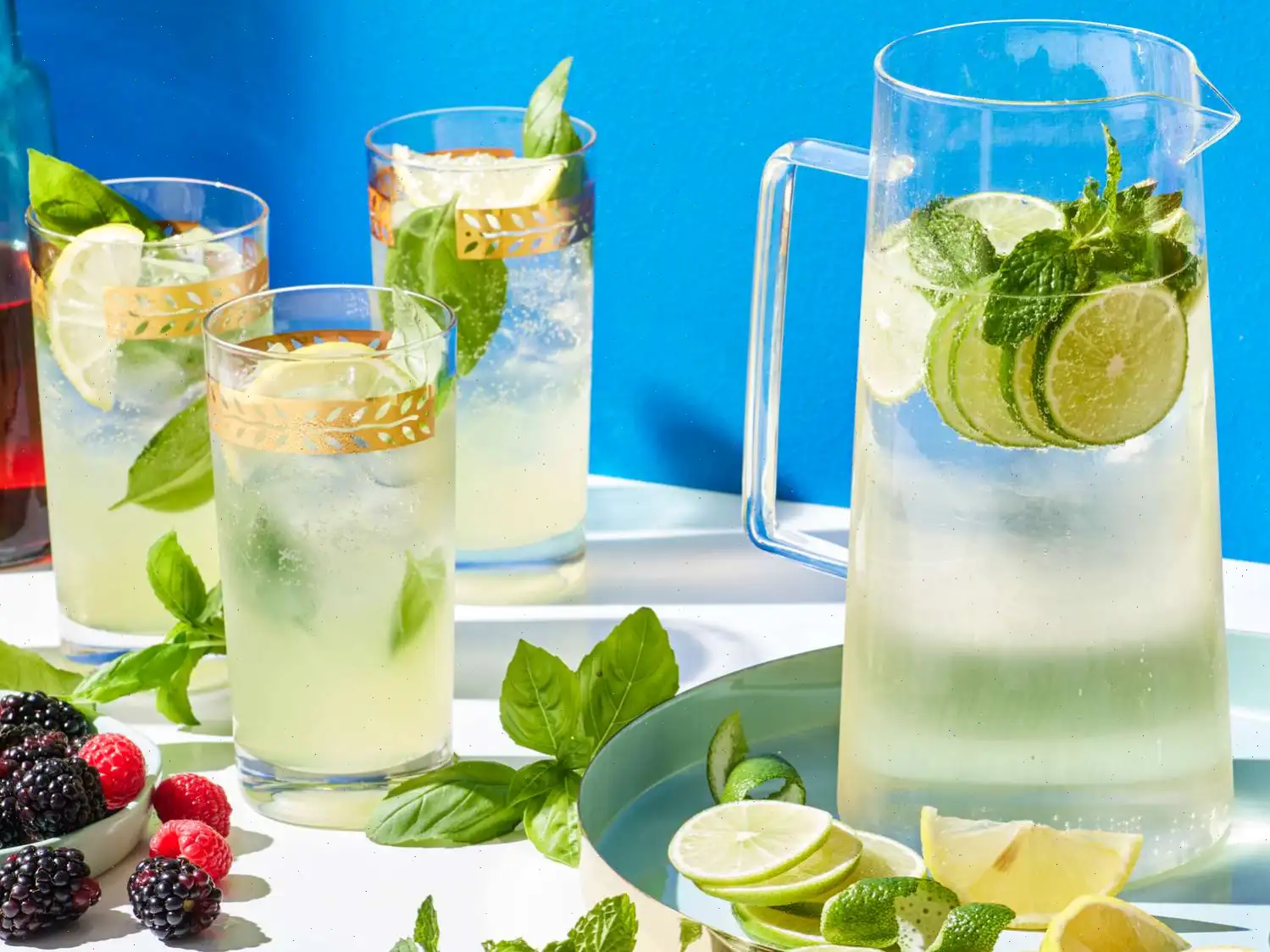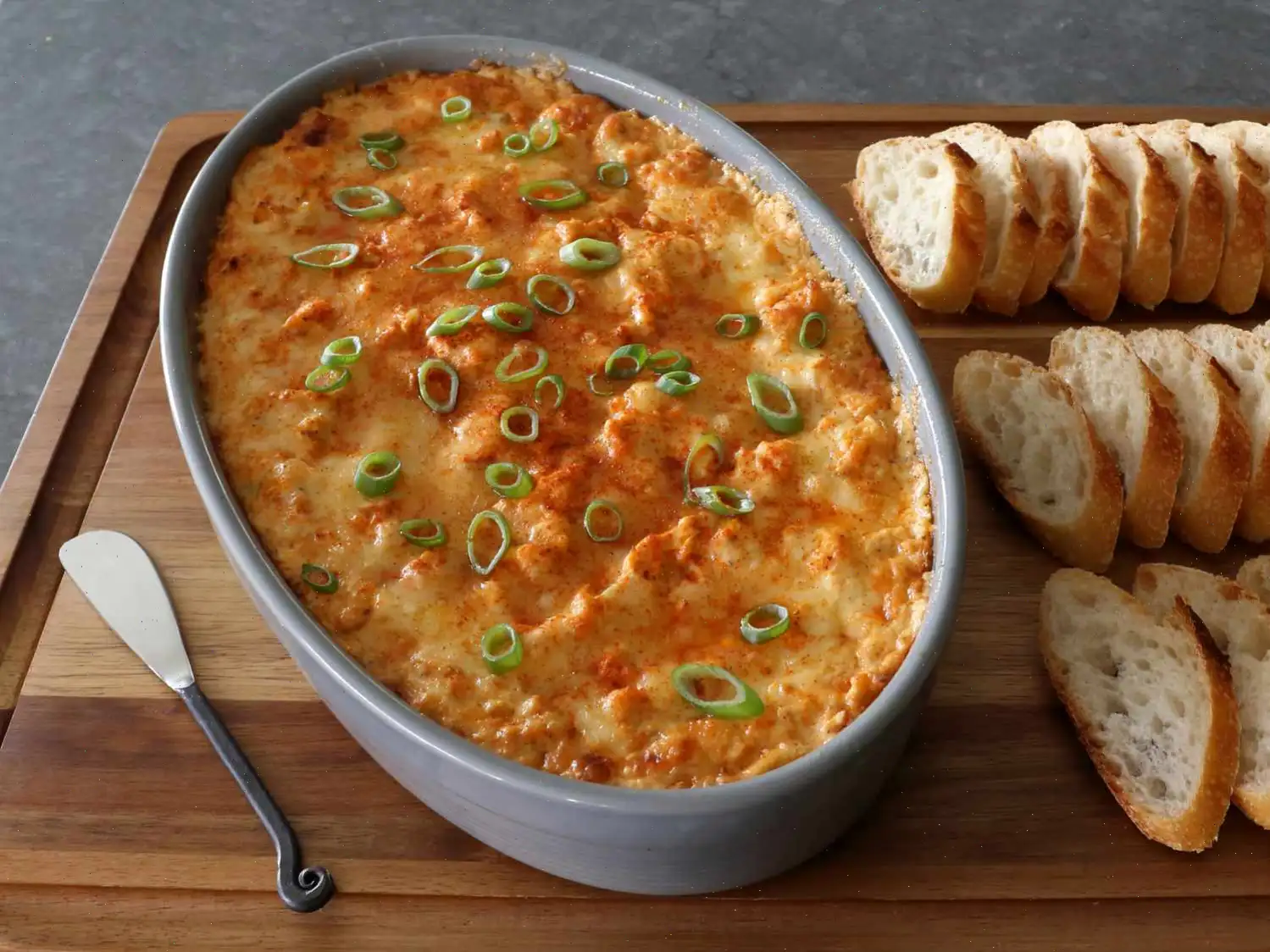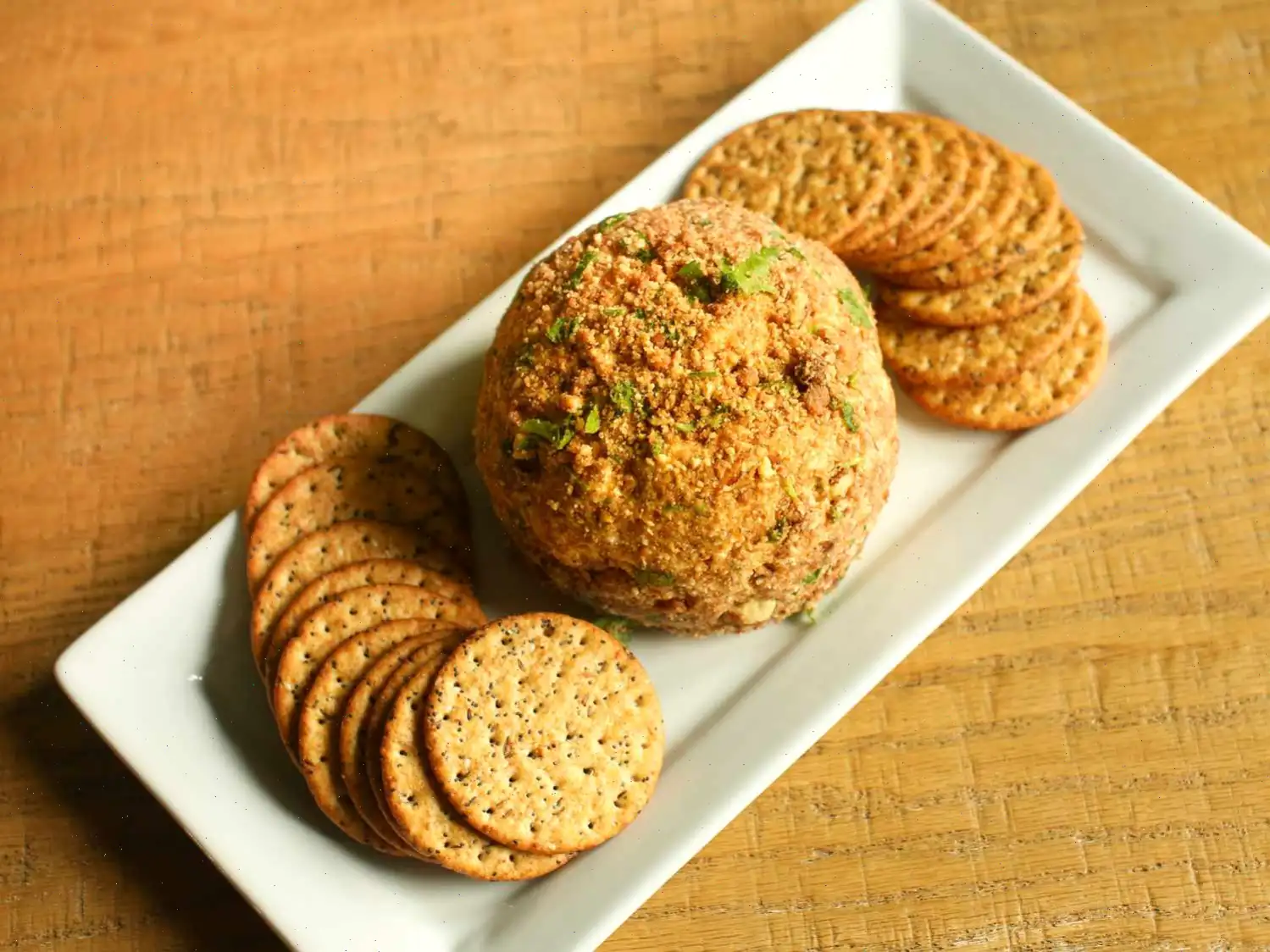
Big Batch Hugo Spritz Recipe
Refreshing Elderflower Prosecco Cocktail
Ingredients
- 6 sprigs fresh mint
- 6 slices lime
- 1 (750 ml) bottle chilled Prosecco
- 3/4 cup chilled sparkling water
- 3 fluid ounces St-Germain elderflower liqueur
- Lime wheels and additional fresh mint, for garnish
- Ice, as needed
Directions
Step 1: Begin by muddling the fresh mint in a 1-quart pitcher to release its aromatic oils. This will create the perfect base for your cocktail.
Step 2: Add the chilled Prosecco to the pitcher, followed by the sparkling water and the elderflower liqueur. Stir gently to combine all the ingredients.
Step 3: For a vibrant touch, garnish the drink with lime wheels and extra sprigs of fresh mint. This will add a beautiful presentation and enhance the refreshing aroma.
Step 4: Pour the mixture into glasses filled with ice, and serve immediately for a perfectly chilled and invigorating cocktail.
Nutrition Facts (per serving)
- Calories: 171
- Fat: 0g
- Carbohydrates: 15g
- Protein: 0g
- Dietary Fiber: 1g
- Sugars: 8g
- Vitamin C: 10mg
- Calcium: 30mg
- Iron: 1mg
- Potassium: 136mg
Servings Per Recipe
This recipe yields 6 servings.
Notes
Percent Daily Values are based on a 2,000 calorie diet. Your daily values may vary depending on your calorie needs.
If you are following a medically restrictive diet, please consult your doctor or dietitian before preparing this recipe for personal consumption.
Origin Story
The Hugo Spritz is a relatively recent addition to Italy's vast cocktail repertoire, first created in the South Tyrol region in the early 2000s. The drink combines the crisp effervescence of prosecco with the unique floral sweetness of elderflower liqueur. Initially, the Hugo was a local favorite among the Italian Alps' warmer months, but its popularity quickly spread throughout Europe, becoming a beloved choice for summer gatherings and outdoor festivities. The "big batch" version, like this one, allows for effortless serving during parties, gatherings, and large celebrations.
Regional Characteristics
Originally from the northern Italian region of South Tyrol, the Hugo Spritz showcases the region's affinity for both alpine traditions and Mediterranean flavors. South Tyrol, which borders Austria and Switzerland, is renowned for its wines, and prosecco is one of its proud exports. The use of elderflower liqueur, St-Germain, is another signature touch, reflecting the region's blend of Italian and Austrian influences. While the South Tyrol version is most closely associated with white wine or prosecco, other regions in Italy have modified the cocktail by incorporating different fruits, herbs, and spirits to suit local tastes.
How the Hugo Differs from Similar Drinks
The Hugo Spritz bears some resemblance to the more famous Aperol Spritz, which also combines prosecco with a bitter liqueur (Aperol or Campari). However, the Hugo's distinctiveness lies in its use of elderflower liqueur instead of bitter spirits, creating a much lighter and sweeter profile. Additionally, while the Aperol Spritz is typically garnished with orange slices, the Hugo Spritz features fresh mint and lime, giving it a more herbaceous and citrusy character. The Hugo is a delightful balance of sweetness and refreshment, making it perfect for those who prefer a gentler, less bitter drink.
Where Is the Hugo Spritz Usually Served?
The Hugo Spritz is often served at social gatherings, particularly during summer afternoons and evenings, where its refreshing taste can be enjoyed in the open air. It is a popular choice at outdoor cafes, beach bars, and garden parties, especially in Mediterranean-style settings. The drinks lightness makes it a wonderful aperitif, ideal for sipping before meals. Its bright and inviting appearance, thanks to the garnish of lime and mint, also makes it a favorite for celebratory events like weddings, festivals, and large family gatherings. In Italy, the drink is frequently enjoyed during aperitivo hour, a time for unwinding with friends and family before dinner.
Interesting Facts about the Hugo Spritz
1. The drink is often referred to as the "South Tyrolean Spritz" because of its origins in South Tyrol, a region known for its Italian-German heritage. 2. While the classic recipe uses prosecco, sparkling wine from other regions can also be used, although prosecco is the most common choice. 3. The St-Germain elderflower liqueur used in the Hugo Spritz is made from handpicked elderflowers, which are known for their delicate floral scent and flavor. This gives the drink its signature sweet and aromatic taste. 4. Although the Hugo Spritz has grown in popularity worldwide, it remains especially beloved in European countries, where its often served as a lighter alternative to the more boozy cocktails. 5. The big batch version is a practical solution for serving large groups, making the Hugo Spritz an ideal option for hosting events like garden parties and summer BBQs.








